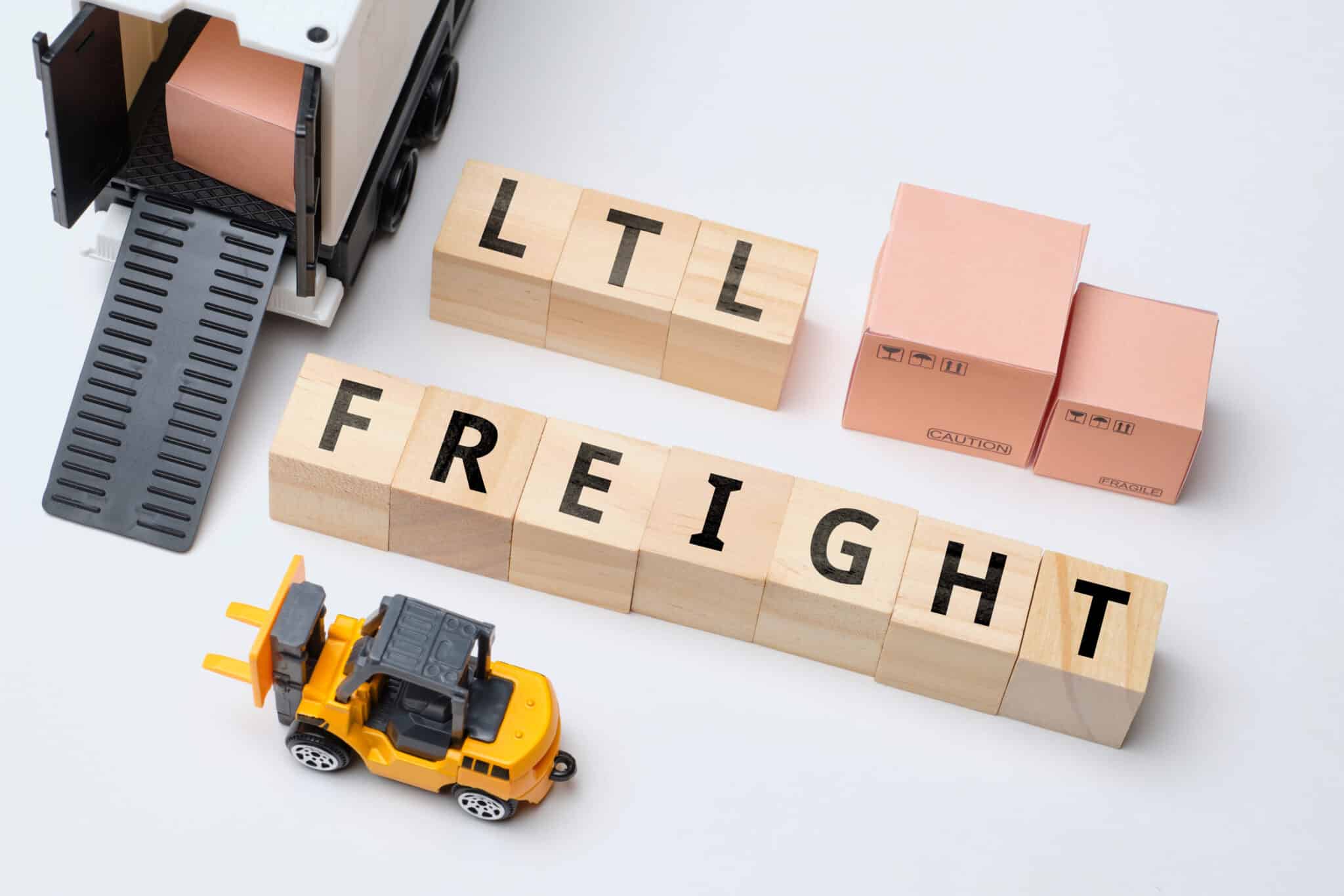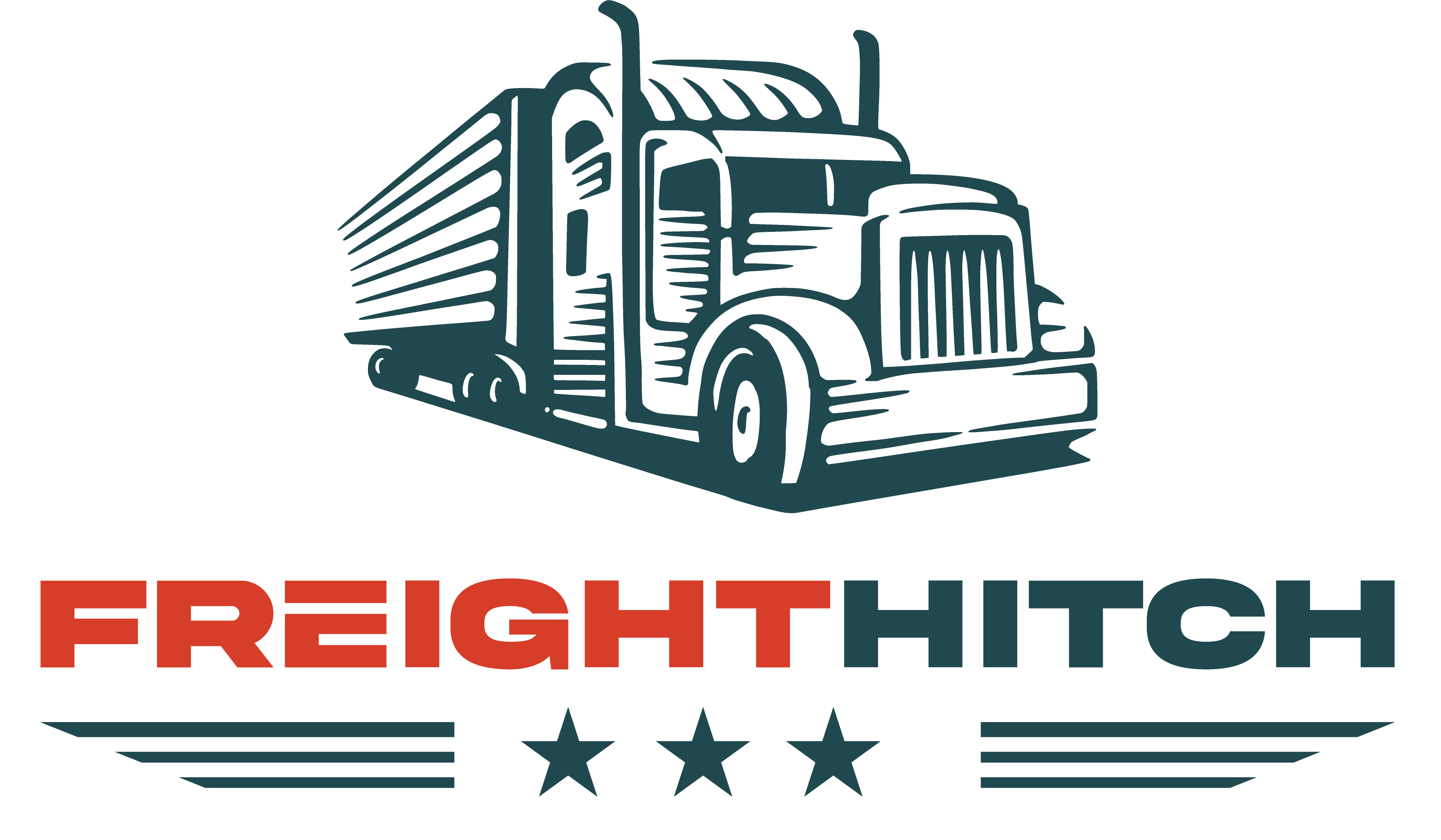Introduction to LTL Trucking
Navigating logistics can be tricky, especially when it comes to picking the right shipping method for your business. If you’re not shipping enough to fill a whole truck, Less-Than-Truckload (LTL) freight might be the perfect fit. It’s a smart, cost-effective way to move goods that are too big for parcel shipping but not enough to justify a full truckload.
Example: Imagine you run a mid-sized e-commerce business that ships custom furniture. Your products are too large for standard parcel services, but you rarely need a full truckload. LTL trucking allows you to share truck space with other shippers, reducing costs while maintaining flexibility in your shipping schedule. This ensures you can meet customer demands without overpaying for shipping.
LTL trucking is particularly valuable for businesses that need to ship smaller quantities more frequently. By sharing truck space with other shippers, you can optimize shipping costs, maintain flexibility, and reduce your environmental impact—all while ensuring your products reach their destination safely. But understanding LTL isn’t just about knowing its definition; it’s about grasping how it can fit into your overall logistics strategy to boost efficiency and meet your specific shipping needs.
If your business is seasonal or experiences fluctuations in order volume, LTL offers the flexibility to scale your shipping needs up or down without committing to full truckloads. This adaptability can be crucial for managing cash flow and inventory efficiently.
Ready to see how LTL can fit into your logistics strategy? Let’s explore the benefits and get started on optimizing your shipping process today.

What is LTL Freight?
Less-Than-Truckload (LTL) freight is a shipping method designed for businesses that need to move goods without filling an entire truck. Typically, LTL is used for shipments that weigh between 150 and 15,000 pounds, making it ideal for loads that are too large for parcel delivery but don’t justify the expense of Full Truckload (FTL) shipping.
In LTL shipping, multiple shippers share space on the same truck. This means your freight is consolidated with other shipments, and you only pay for the portion of the truck that your goods occupy. The remaining space is filled by other companies’ shipments, which helps distribute the cost of transportation across all users. This shared approach not only reduces expenses but also offers added benefits such as increased security and access to additional services like liftgates and inside delivery.
Example: A small tech startup in San Francisco needs to ship batches of hardware prototypes to various testing sites across the country. By using LTL freight, they can send these smaller, high-value shipments securely and cost-effectively, benefiting from added security features like palletizing and consolidated shipping.
Understanding how LTL freight fits into your logistics strategy is crucial. It’s not just about the cost savings; it’s about how this method can streamline your operations, especially when you don’t need to commit to a full truckload. By leveraging LTL, you can achieve a balance between efficiency, cost-effectiveness, and service quality, making it a valuable option for many businesses.
Tip: Always compare the cost per pound or cubic foot of LTL with other shipping methods to ensure you’re choosing the most cost-effective option. Use tools like freight rate calculators or consult with a logistics expert to optimize your shipping strategy.
Types of LTL Services
When it comes to Less-Than-Truckload freight, not all shipments are created equal. LTL trucking offers a range of specialized services tailored to meet different shipping needs. Understanding these options can help you choose the right service for your business, ensuring that your goods are handled appropriately and delivered on time.
- Standard LTL Shipping: This is the most common type of LTL service, ideal for general freight that doesn’t require special handling. It’s perfect for businesses that need to ship smaller loads regularly without the need for an entire truck.
Example: A cosmetics company shipping monthly orders of products to retail stores across the country uses standard LTL to keep shipping costs low while ensuring timely deliveries. - Reefer LTL: For temperature-sensitive goods, Reefer LTL services provide the necessary climate control. Whether you’re shipping perishable foods or sensitive electronics, this service ensures your products remain in optimal condition throughout transit.
Example: A seafood distributor uses Reefer LTL to ship fresh catches to inland restaurants. The temperature control ensures the seafood arrives fresh, maintaining the quality and safety of the products. - Expedited LTL: When time is of the essence, expedited LTL services prioritize your shipment, reducing transit times and getting your goods to their destination faster. This is crucial for time-sensitive deliveries where delays could lead to significant losses.
Example: A pharmaceutical company needs to send urgent vaccine shipments to a distribution center. Expedited LTL ensures the vaccines arrive quickly, preserving their effectiveness and meeting regulatory timelines. - White-Glove Services: If your freight requires special attention, such as inside pickup and delivery or handling of delicate items, white-glove LTL services offer that extra level of care. These services often include additional features like liftgate access and specialized packing.
Example: An art gallery ships valuable sculptures to an exhibition. White-glove LTL services provide the necessary care and precision in handling these fragile items, ensuring they arrive in perfect condition.
Tip: Evaluate your shipment’s specific needs before selecting an LTL service. For instance, if you’re shipping high-value or delicate items, investing in white-glove services might save you from costly damages.
Benefits of LTL Trucking
Less-Than-Truckload (LTL) shipping offers a variety of benefits that make it an attractive option for businesses of all sizes. By understanding these advantages, you can better determine how LTL freight fits into your logistics strategy and how it can enhance your overall operations.
- Cost Efficiency: One of the most significant benefits of LTL shipping is cost efficiency. Since multiple shippers share space on the same truck, you only pay for the portion of the truck that your freight occupies. This shared approach leads to lower transportation costs compared to booking an entire truck for a smaller shipment.
Example: A furniture retailer reduces shipping costs by consolidating weekly shipments with other companies, allowing them to pass savings on to customers without compromising delivery speed. - Flexibility: LTL trucking also offers flexibility in terms of shipment sizes and frequencies. You’re not locked into shipping large quantities at once, which means you can send smaller loads as needed without incurring the high costs associated with FTL.
Scenario: A seasonal business can adjust its shipping frequency according to demand, sending smaller shipments more frequently during peak seasons and fewer shipments during off-peak times. - Access to Additional Services: LTL carriers often provide access to specialized services that might not be available with other shipping methods. For instance, LTL shippers can take advantage of liftgate services, inside pickup and delivery, and even white-glove services for delicate or high-value items.
Example: A home appliance manufacturer offers inside delivery to customers using LTL services, enhancing customer satisfaction by ensuring appliances are delivered directly into homes. - Enhanced Security: When shipping via LTL, most shipments are loaded onto pallets, which adds an extra layer of security. Properly palletized freight is less likely to be damaged during transit, as it is easier to handle and more stable during loading and unloading.
Tip: Use quality pallets and secure your freight with stretch wrap to minimize movement during transit. This reduces the risk of damage and ensures your goods arrive in excellent condition. - Environmental Benefits: LTL shipping can also contribute to sustainability efforts by reducing the number of trucks on the road. Since multiple shipments are consolidated into one truck, there are fewer vehicles needed to transport the same amount of goods.
Insight: If your company is working on a green initiative, LTL shipping can be part of your strategy to reduce your carbon footprint, helping you meet corporate sustainability goals.

Common Terms in LTL Trucking
Understanding the terminology used in Less-Than-Truckload (LTL) shipping is crucial for navigating the logistics landscape effectively. These terms are often specific to the industry and can significantly impact your shipping decisions. Below, we’ll break down some of the most common terms you’re likely to encounter when dealing with LTL freight.
- Freight Class: Freight class is a standardized classification system used in LTL shipping to categorize freight based on its weight, dimensions, density, stowability, handling, and liability. There are 18 different freight classes, ranging from 50 to 500, with lower classes typically being less expensive to ship.
Tip: Misclassifying your freight can lead to additional charges or delays. Use a freight class calculator or consult with your carrier to ensure your shipment is correctly classified. - Bill of Lading (BOL): The Bill of Lading (BOL) is a legal document that serves as a receipt for the goods being shipped. It includes essential details such as the shipper’s and consignee’s information, a description of the items, the freight class, and any special handling requirements.
Tip: To avoid misdelivery or billing disputes, ensure that all information on the BOL is accurate and complete. Double-check the consignee’s address and any special instructions before finalizing the document. - Accessorial Charges: Accessorial charges refer to additional fees that may be incurred during the shipping process for services beyond the standard LTL shipment. These can include fees for services like liftgate delivery, inside pickup, residential delivery, or handling hazardous materials.
Tip: Review all potential accessorial charges in advance to avoid surprise fees. Request a detailed quote that outlines all possible charges before confirming your shipment. - Dimensional Weight: Dimensional weight, or DIM weight, is a pricing technique used in LTL shipping that considers both the size and weight of the shipment. This method calculates shipping costs based on the space your freight occupies on the truck, rather than just its actual weight.
Tip: To minimize DIM weight charges, consider using compact and efficient packaging. Reducing unnecessary space can significantly lower your shipping costs. - Consignee: The consignee is the person or company that is receiving the shipment. The consignee’s information is included on the Bill of Lading and is essential for ensuring that the goods are delivered to the correct destination.
Tip: If your shipment is time-sensitive, clearly communicate with the consignee to ensure they are prepared to receive the delivery. This can prevent delays and additional storage fees. - Freight Broker: A freight broker acts as an intermediary between shippers and carriers. They help arrange transportation, negotiate rates, and handle the logistics of the shipment.
Tip: If you’re new to LTL or need help navigating complex logistics, working with a reputable freight broker can save you time and money. They can leverage their network to secure the best rates and services tailored to your needs. - Shipping Lanes: Shipping lanes refer to the predetermined routes that carriers use to transport freight. These lanes are based on factors like geography, traffic patterns, and demand, and they help optimize delivery times and costs.
Tip: Understanding the most efficient shipping lanes for your freight can lead to faster delivery times and cost savings. If possible, plan your shipments around well-established lanes to take advantage of these efficiencies.
How to Choose the Right LTL Transportation Company
Selecting the right LTL carrier is essential for ensuring efficient, secure, and cost-effective shipping. Here’s a concise checklist to help you make an informed decision:
Checklist for Choosing an LTL Carrier
- Reliability
- Call the Company: Ask about their on-time delivery rate.
- Expected Answer: A reliable carrier should have a 95%+ on-time delivery rate.
- Question: “What is your on-time delivery percentage?”
- Why It Matters: Ensures shipments arrive on schedule, reducing the risk of delays.
- Coverage Area
- Call the Company: Confirm their service coverage.
- Expected Answer: They should cover all your key regions, including remote and cross-border areas.
- Question: “Do you service all the regions we ship to, including cross-border?”
- Why It Matters: Ensures the carrier can handle all your shipping needs as your business grows.
- Service Offerings
- Call the Company: Inquire about their specialized services.
- Expected Answer: They should offer services that match your specific needs, like temperature-controlled or white-glove delivery.
- Question: “Can you handle specialized shipments like temperature-controlled or white-glove delivery?”
- Why It Matters: Ensures your unique shipping requirements are met.
- Pricing Structure
- Call the Company: Request a detailed quote.
- Expected Answer: Transparent pricing with a breakdown of all potential charges, including accessorial fees.
- Question: “Can you provide a detailed quote that includes all potential charges?”
- Why It Matters: Helps avoid hidden fees and ensures you understand the total cost.
- Customer Service
- Call the Company: Test their responsiveness.
- Expected Answer: The carrier should have a responsive and dedicated customer support team.
- Question: “How do you handle issues or track shipments, and how quickly can I expect a response?”
- Why It Matters: Ensures smooth operations, especially during peak times.
- Technology Integration
- Call the Company: Inquire about their tech capabilities.
- Expected Answer: They should offer online tracking, automated notifications, and easy access to shipping documentation.
- Question: “What technology tools do you offer for tracking and managing shipments?”
- Why It Matters: Provides transparency and real-time data for better decision-making.
- Flexibility
- Call the Company: Ask about their ability to adapt to changing needs.
- Expected Answer: The carrier should be able to scale services up or down as your needs change.
- Question: “How flexible are you in handling fluctuating shipping volumes or special requests?”
- Why It Matters: Ensures the carrier can adapt to your business’s changing demands.
Conclusion
Understanding how Less-Than-Truckload (LTL) freight fits into your logistics strategy can significantly boost your business’s efficiency and cost-effectiveness. LTL shipping offers flexibility, cost savings, and a range of specialized services, making it a versatile option for businesses of all sizes.
Regularly assess your shipping needs and compare LTL carriers to ensure you’re getting the best value. Staying up-to-date with LTL trends and services can help you continuously optimize your logistics strategy. If you want to know more about LTL shipping, check out this detailed explanation on the American Trucking Associations website: https://www.trucking.org/
Choosing the right LTL transportation company is crucial. Consider factors like reliability, coverage, service offerings, pricing, customer service, and flexibility to select a carrier that aligns with your specific needs.
Whether you’re new to LTL freight or looking to refine your logistics processes, now is the time to act. Evaluate your current strategy, explore potential carriers, and make informed decisions to enhance your operations. The right LTL solution can streamline your logistics, reduce costs, and drive your business forward.
Tip: Don’t hesitate to consult with industry experts or freight consultants if you need help refining your LTL strategy. Their insights can ensure your logistics operations are as efficient and cost-effective as possible.




